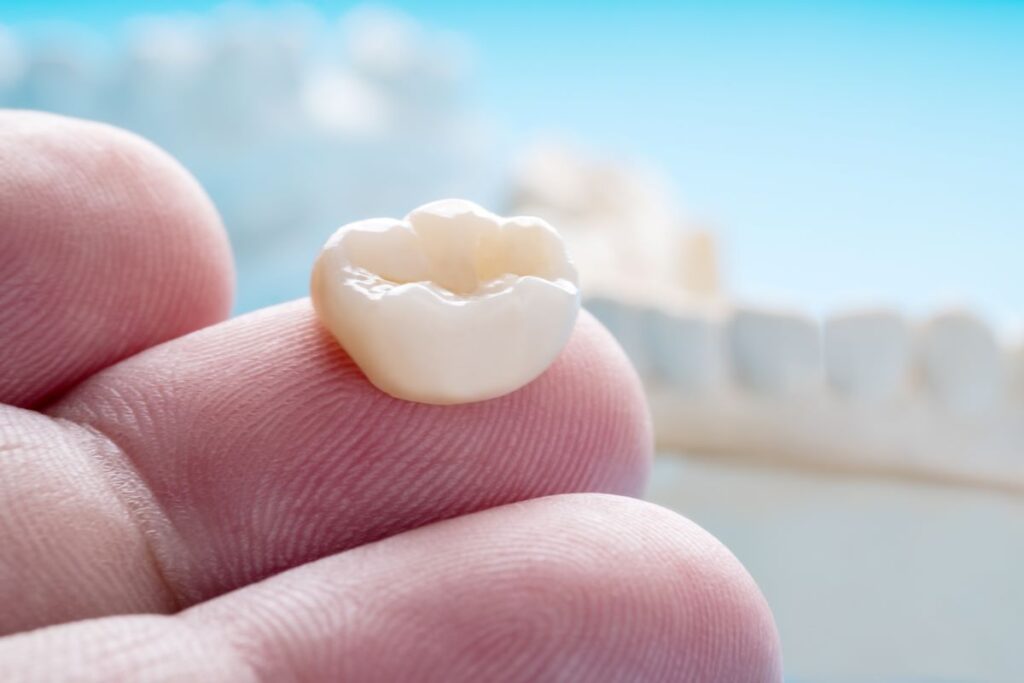
If you’re considering getting a dental crown, you may be wondering what their track record is when it comes to safely and effectively repairing damaged teeth. The good news is that today’s crowns have a long history of reliability, but they wouldn’t be where they are today without the long and fascinating journey they took to get here. In fact, the earliest crowns were said to have been developed by the Etruscans around 166 to 201 AD.
Here’s a closer look at the history of dental crowns, and how they can help you today!
The First Crowns
Back when dental crowns were first invented, they were meant to be a status symbol for the wealthy. At the time, goldsmiths would remove healthy teeth and replace them with gold banding, but unfortunately these teeth didn’t work well for chewing and were therefore mostly for appearances. Luckily, if you could afford this type of accessory, you could also afford servants to cook for you, so these wealthy crown-wearers were able to eat a softer diet that didn’t suffer much due to their diminished chewing capabilities.
The Middle Ages
Around the year 700, Chinese doctors wrote about using silver paste to fill in cavities, and sometime in the 1500s, “The Little Medicinal Book for all Kinds of Infirmities of the Teeth” became the first book published exclusively about the care of teeth. The tome even included a chapter about properly preparing dental crowns. By 1575 Ambrose Pare’s “Complete Works” went into further technical detail on the subject.
The 1700s and 1800s
Over the next several centuries, dental crowns became more common, when a man by the name of Claude Mouton discovered that using white enamel over gold teeth would make them appear more lifelike.
Here in the United States, an Englishman named John Baker arrived and introduced the field of dentistry, which launched a deeper interest in the field and encouraged educators and researchers to take a closer look at it.
By the late 1800s, Dr. Charles H. Land patented a prosthetic called a porcelain ‘jacket’ crown, which could cover a whole, broken tooth. Unfortunately, it often incurred tiny cracks that would damage the underlying tooth and gums.
The 20th Century
The 20th Century brought the introduction of dental crowns made with porcelain fused to metal. These were more durable than their predecessors, but it wasn’t until 1984 that the first crowns made with ceramic and glass that are still used today were manufactured. These crowns last up to ten years or more, are safe for your teeth and gums, and allow you to use your treated teeth just as you did your natural teeth. Plus, they’re more affordable than those original gold teeth, so you needn’t be royalty to enjoy them!
Remember, dental crowns have had a long journey to get where they are today, but modern restorations are well worth the adventure. If you’ve been prescribed a crown by your dentist, you can rest assured that your smile has history on its side!
About Dr. Helal
Dr. Salma Helal comes from a family of teachers, so naturally she understands the importance of educating her patients about all things oral health. After all, if you empower someone to care for their teeth and gums on their own, they will have a healthier mouth and body to show for it.
If you’d like to learn more about the many benefits of dental crowns and how this historic treatment can preserve your smile, please contact Crescent Dental for a consultation by visiting our website or calling us today at 763-571-4837.

